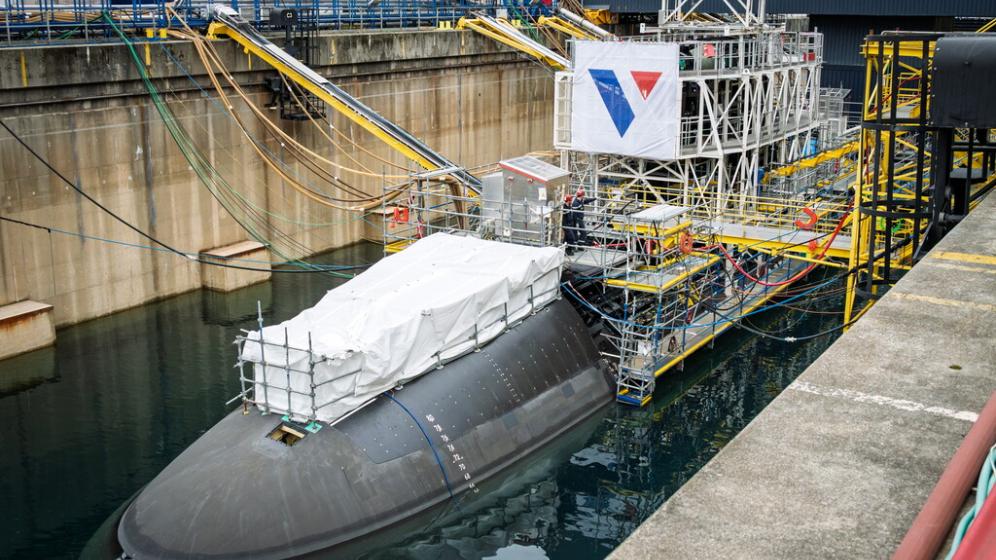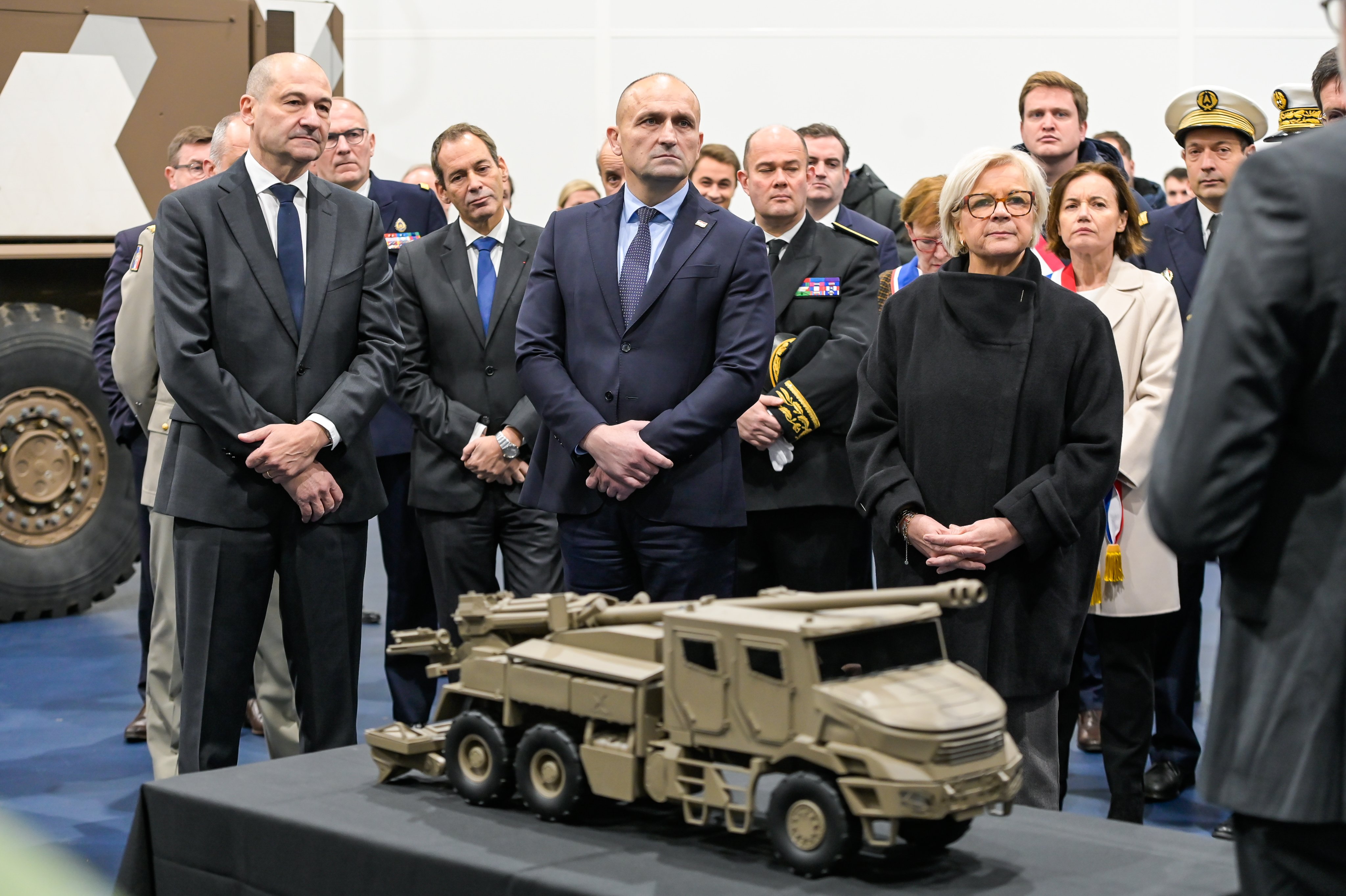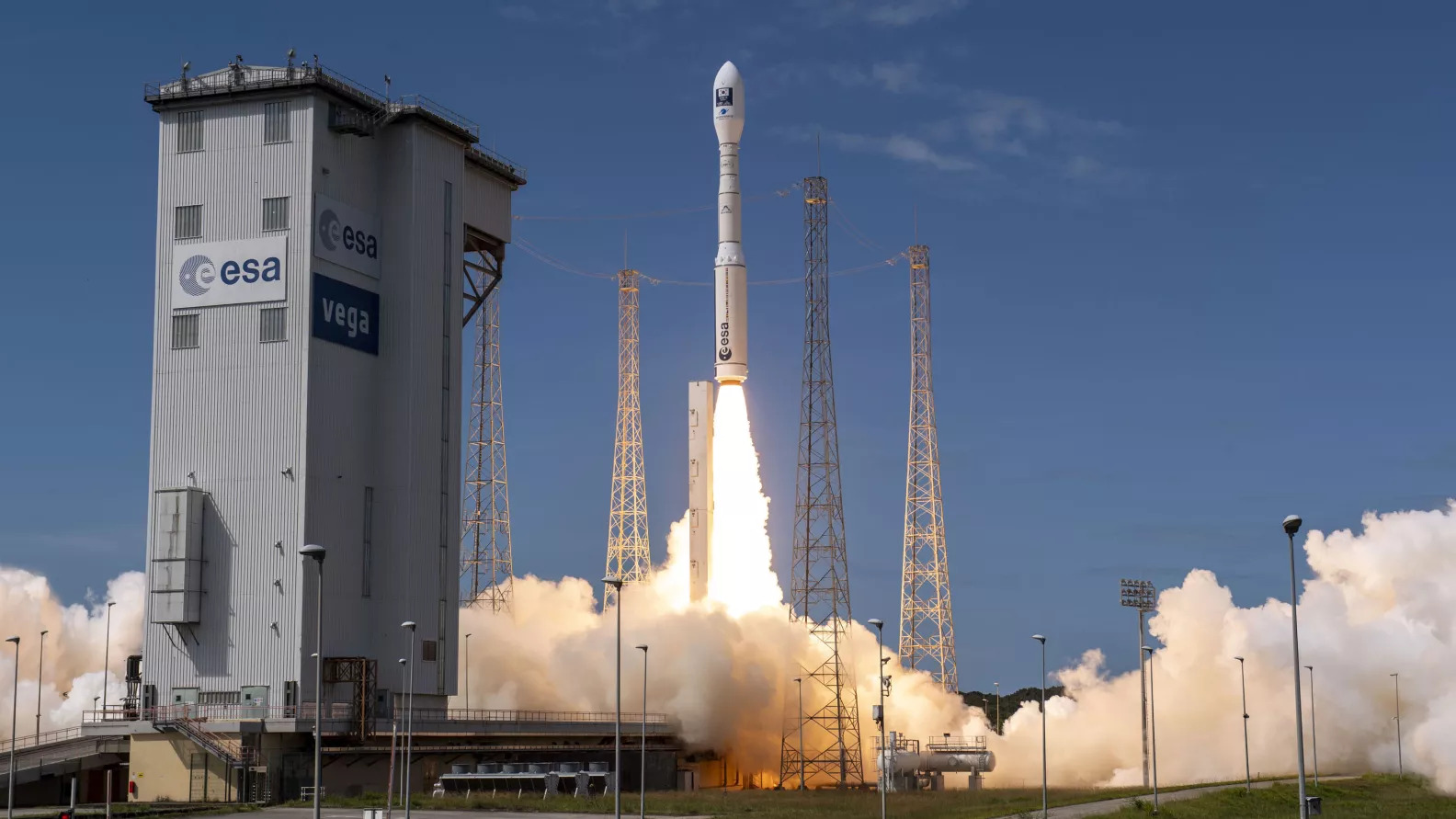Drones have been occupying an increasingly dominant position in recent conflicts. Their advantages are synonymous with opportunities for the armed forces. Nevertheless, they should be seen in the more general framework of the air order of battle since, more than an end in themselves, drones are a force multiplier meriting consideration as a complement to other piloted platforms.
The Role of Unmanned Aerial Vehicles in Current and Future Conflicts
Dronisation(1) is a phenomenon now apparent in all physical operational environments. Western air forces have been showing renewed interest in drones since the war on terrorism, but the confrontations in Syria, Libya, Nagorno-Karabakh and now in Ukraine show that they now play a major role, whatever the nature of the conflict.
Western forces are therefore seeking the best possible balance between piloted and remotely controlled vehicles for coherence in their capabilities. Such considerations are particularly relevant with the return of high-intensity conflict in which the stakes of mass and cost, both human and financial, are determinant.
Changing Trends in the Use of Drones
The limitations of drones in non-permissive air environments
Because of their characteristics, which include endurance, cost-effectiveness and remoteness of the pilot, drones have been regularly presented as a substitute for piloted aircraft in the medium to long term. Nevertheless, their technical limits and considerations of future scenarios for the use of forces mean that this idea of the drone as the sole capability for the future needs to be refined somewhat.
Those who would advocate the all-drone solution base their arguments on feedback from drone use during counter-insurgency operations in Iraq and Afghanistan. In those cases, they were permissive air environments with no air-air, ground-air or air-ground threats and without any in-depth strike operations, so the field was left free for drones. The page would seem to be turning, and it is becoming more complicated for Western forces to impose air superiority. Whilst this might seem obvious in a dissymmetrical confrontation between two state actors, this hardening of the third dimension is now seen in low-intensity conflicts as well.
This shift in the likelihood of losses puts the spotlight on several factors that limit the use of drones, starting with their lack of on-board means of self-protection. Even though drones have low radar cross-section and low acoustic signature, they are not stealth nor do they carry electronic countermeasures (ECM) or decoys. Moreover, their low speed and manoeuvrability reduce their survivability when challenged by even rudimentary enemy surface-to-air missile systems.
The majority of drones are also sensitive to the electromagnetic (EM) environment. A contested environment will affect the performance of the on-board navigation and electronic instruments: data links with the ground station could be corrupted or quite simply, cut.
The rush for small drones and rebalancing the offensive/defensive ratio
Small, tactical drones do not appear to spark the same criticism. Though the losses of these drones are considerable, they are compensated by their low cost, which means they are considered as consumable items. Both sides in the war in Ukraine are using small drones in massive numbers. The potential of these smaller models opens up new operational perspectives in terms of saturation attacks. Nevertheless, the military promise of the segment needs to be carefully considered, too. First, countermeasures now exist, and various jamming systems (including anti-drone guns and electronic warfare—EW equipment) have on several occasions prevented drone use in the Ukrainian theatre.
Second, improved defence systems will automatically lead to a shift in the force balance between sword and shield. Whether by improved sensors (surveillance and tracking radars) or effectors (directed-energy weapons and anti-drone drones), the proliferation of Counter-Unmanned Aircraft Systems (C-UAS) within defence industry augurs tipping the balance towards the defensive. The real question, though, is to know which system will offer the best defence against drones at a proportional cost.
Current State of development—priority to complementarity of manned and unmanned craft
The current technical weaknesses of drones and the gradual improvement in air defence mean that prophesies of the end of manned aircraft in the near future need to be kept in perspective. Combat aircraft have technical characteristics that most drones do not have, and Unmanned Combat Aerial Vehicles (UCAV) have yet to demonstrate their effectiveness in relation to their development cost. The differences between the two types of vehicle are encouraging parts of the R&D sector to design an unmanned platform with technical and employment characteristics similar to those of combat aircraft. Although these combat drones offer advanced flight performance, greater autonomy and an increased and more varied payload, research is showing them to be just as costly as manned aircraft, which undermines their cost-effectiveness and their ‘consumable’ advantage.
More generally, the dronisation of the third dimension is being held back by social and cultural issues related to new debates over Artificial Intelligence (IA) and robotisation of the battlefield. Western countries’ defence policies all lean towards retaining manned aircraft, whose deployment would be coordinated with Remote Carriers.
The drone: a Quick Solution for Recovering Mass
In the year 2054, the entire defense budget will purchase just one tactical aircraft. This aircraft will have to be shared between the Air Force and Navy 3½ days each per week.(2)
Augustine’s famous law sums up the problems posed by inflation in unit costs of production and maintenance operations. Inflation also drives the reduction in aircraft numbers in Western air fleets. Nevertheless, at a time when we are preparing for high intensity the question of organic mass arises in a new way. In that context, drones represent one of the best responses for halting the trend towards a combat fleet lacking in organic strength.
Western combat aviation has seen its numbers fall dramatically since the end of the Cold War. Since 1990 the number of aircraft has been reduced by a quarter in the United States and by over a half in Europe. Although this reduction has not always affected the total firepower of combat aircraft it has certainly had an impact on the availability of military materiel. There is, of course, a lower threshold of aircraft needed to be able to deploy substantial firepower, and to overcome attrition in a conflict and continue to conduct permanent missions.
The challenge for Western forces is therefore to possess an aviation force capable of acting across the full spectrum of conflict. In terms of capacity, the format will be a function of high-tech piloted craft and their remote carriers. Their combination within a system of systems will allow first entry operations at reasonable human and financial cost, and recovery of sustainable mass. The remote carriers planned for the Future Combat Air System (Système de combat aérien du futur—Scaf) will have to be considered as consumables, which implies strict control of development costs in order not to undermine the added value in capacity that is sought.
The overall plan for manned aircraft and unmanned sensors and effectors needs careful consideration of the balance to be achieved between platforms in order that each threat across the entire spectrum will receive an adequate military response in terms of desired effect and cost. Beyond the simple matter of flexibility in the air, this new format for capability will be an element of the general dynamics of collaborative combat sought by Western forces. In this way, drone-based airborne sensors and effectors would also be able to respond effectively to the requirements of land and maritime forces for pre-or post-action reconnaissance missions, strikes and direction of fires.
Possible new operational fields
The use of drones in the conflicts in Libya, Nagorno-Karabakh and today in Ukraine illustrate several operational possibilities which might prove relevant during debate over the future format of air forces.
Protection of critical infrastructure and key assets
The events in Ukraine show the permanent need to review and adapt levels of protection of the air forces’ footprint. The procurement of a sufficient number of small drones for this would permit defence of enlarged forward airspaces which would then no longer be limited to the operational range from their base. As an example, the Skylark Lex NG, produced by Elbit Systems Ltd and operated by the French Air Parachute Commando No.30 (CPA30) has an operational range of 20 to 40 km and 3 hours’ endurance. Its ease of launch and use make it an ideal machine for protecting military installations on home soil and abroad by virtue of its capability to detect an enemy attack early enough to give added time to prepare their defence.
Procuring ‘contact’ drones as key enablers for special forces
The technical characteristics of mini, micro and nano-drones would bring considerable added value to accomplishing special forces’ (SF) missions. With their ease and speed of operation, stealth, robustness and low cost these drones would increase SF freedom of action in acquiring intelligence pre- and post-action (battle damage assessment), reinforce protection of the group and enhance the effect of deception manoeuvres against enemy forces.(3)
Increasing deep strike capability into enemy territory
This is a mission for the air forces, who already have the skills, the air-ground capabilities to give sufficient range to reach the enemy’s rear, and the overall C4ISR functions of Command, Control, Communication, Computers, Intelligence, Surveillance and Reconnaissance that are needed. French capability for this currently relies on a number of medium-range missiles: the Modular air-to-ground weapon (Armement air-sol modulaire—AASM; range over 50 km) and the Long range air-launched cruise missile (Système de croisière conventionnel autonome à longue portée —Scalp; range in excess of 500 km).(4)
The capability to strike in depth raises three further issues. First, in numerical terms, a high-intensity engagement requires an adequate stockpile of precision-guided munitions. Second, the reach of air-to-ground weapons is increasingly being challenged by the increasing ranges of enemy defence systems. And third, the matter of cost re-enters the equation, since it is higher when precision munitions like AASM or Scalp are used. An accountant’s approach to in-depth air-launched ground strikes would be to seek less costly options.
The confrontations in Nagorno-Karabakh and Ukraine have demonstrated the role that loitering munitions could play, with their capability somewhere between that of a drone and a cruise missile. Azerbaijan employed the Israeli-built IAI Harop for SEAD operations (Suppression of enemy air defences) over Armenian territory.(5) The Harop has an endurance of 6 hours and an operational range of up to 1,000 km, with a unit cost approaching 70,000 dollars. Hence these munitions mean that SEAD missions can be fulfilled at low cost. By way of comparison, the cost of the US AGM-88 HARM (High-speed anti-radiation missile) on board Ukrainian MiG-29 and Su-27 varies between 284,000 and 870,000 dollars according to the version. In the case of Nagorno-Karabakh, it was such a combination of EW, drones and this type of remotely controlled munition that demonstrated its effectiveness.
Whilst the majority of loitering munitions in Ukraine have a limited range of action (generally 40 km) and are only appropriate up to the tactical depth of the enemy, Russian use of the Iranian Shahed 136 (called Geran-2 by Moscow) is allowing its forces to strike deep into their enemy’s territory. The vehicle shot down by small-calibre light weapons in Kyiv on 17 October 2022 would nevertheless indicate that the system is limited by the lack of self-protection and by its ineffectiveness against mobile targets: its guidance, which combines an inertial navigation system and GLONASS (Russian equivalent of GPS), cannot be corrected in flight. This model is said to have a range of 1,000 km (though Teheran claims 2,500 km) and a unit cost of some 20,000 euros.
Although ground-based fires are important in the Ukrainian conflict, artillery has a more restricted range, and its effectiveness often depends on reconnaissance drone missions: HIMARS has a proven range of 300 km, with possible extension to 500 km, and yet the cost of using these long range systems is also high. A GMLRS rocket costs 160,000 dollars and an tactical ballistic missile for ATACM, around a million dollars.(6) Artillery is therefore outclassed in terms of range and cost compared to the potential of some loitering munitions.
Here, national development of long-range loitering munitions, or purchase off-the-shelf would offer greater flexibility in in-depth strikes at lower cost. Procurement in considerable numbers would offer greater endurance and make saturation strikes conceivable. For Western air forces that have no real strategic bombing component (compared with the Russian Long-Range Aviation) this solution would fill the blind spots.
Bringing UAV-carrying platforms into service
The deployment of robust drones from airborne platforms would increase their capability for endurance over theatres of operation, but would require a dedicated C2 structure able to handle the data flow from all the captors. The United States is developing a programme of this type—Rapid Dragon,[7] and the French company Turgis & Gaillard is offering several solutions for increasing the multi-role capabilities of the A400M, including SSA-1604 Foudre, a system which enables the aircraft to launch munitions from its hold.(8)
Developing effective and robust C-UAS
During the Franco-American Exercise Warfighter, held on 6-15 April 2021 at Fort Hood, Texas, after only five hours of manœuvres two battalions had been hit ‘virtually’ by a simulated drone attack, with the death of 800 troops.(9) This example illustrates the current vulnerability of ground forces to drone attacks and should encourage the development of high-performance C2, short-range C-UAS systems.
While current EW systems fulfil a function of self-protection of forces, other solutions are on the way, such as anti-drone drones and directed-energy weapons. In this regard, Israel has developed the Iron Beam air defence system to offer a response to the problems of saturation attacks by rockets or mortars or, in the near future, by drones. Given that an Iron Dome interceptor is estimated to cost between 100,000 and 150,000 dollars, Iron Beam could fill in for it at much lower cost.
Suppression and Destruction of Enemy Air Defences(10)
As long ago as 1982, during Operation Mole Cricket 19, the Israeli Air Force deployed drones as decoys over the Beqaa Valley in Southern Lebanon to force Syrian radars to transmit. A reactive combined reconnaissance/strike architecture of F-4 Phantom II then ensured the destruction of enemy surface-air missile (SAM) systems.
Whilst this technique thwarts the enemy’s effect of surprise and guarantees acquisition of targeting information on SAM sites without human risk and at low financial cost, it nevertheless involves exposure of pilots when dealing with the target.(11) The 1982 operation launched a debate in the Israeli Defence Forces over the procurement of new anti-radar platforms, as a result of which, IAI developed two loitering munitions to satisfy this specific requirement, Harpy and Harop.
Since then the range of anti-radar loitering munitions has diversified, with the Chinese ASN-301 and Turkish Kargi, for example. Some countries have also chosen to fit their drones with anti-radar missiles, such as the Chinese WJ-700 and Indian Rustom 2. Any of these solutions could form part of a more general order of battle, especially for first entry operation in a non-permissive theatre.
Reinforcing airborne detection and early warning capabilities
In a system of systems approach, a drone’s ISR functions act as sensors for the combat architecture or as a force multiplier for manned aircraft such as AEW&C or AWACS.(12) The role as sensor for combat architecture is being considered with regard to the balance between Remote Carriers and 6th generation aircraft, whereas support to manned aircraft is already operational. As an example, Northrop Grumman RQ-4 Global Hawk flying out of Sigonella in Sicily, patrol the Black Sea and operate in liaison with NATO countries’ airborne warning and/or control platforms. This arrangement allows the latter to operate on a racetrack at a safe distance while adding to their situational appreciation by the information gathered by a sensor positioned ahead of them, closer to the theatre.
Close Air Support (CAS)
Drones’ capacity for endurance provides the JTAC/JFO (Joint Terminal Attack Controller/Joint Fires Observers) with highly reactive ‘airborne artillery’ in a loiter zone above a theatre. In a much reduced timescale a JTAC/JFO can requisition the effector that is best adapted in terms of load, speed, availability and cost in relation to the objective.
Though the endurance of drones is an advantage for dealing with targets of opportunity, they can also improve accuracy of fires, particularly in urban environments. From August to September 2016 during the recapture of Sirte, in Libya, over 70 per cent of Reaper strikes related to CAS, with some as close as 25 metres from the ground.(13)
For these missions, loitering munitions have the advantage of being reversible—in the case of a hold fire, they can return to the waiting area. Drones with greater wingspan offer other advantages: in addition to a heavier load, their operational ceiling means they are more discreet both visually and audibly and can thus add to the effect of surprise and cast an imperceptible, though real threat on the enemy and his morale. Additionally, the missiles carried have better reactivity: a Switchblade 600 can reach 185 kph at optimum speed whereas a Hellfire can go up to Mach 1.3, has a greater range (500 km as against 40 km) and a lower probability of interception. The cost of a Switchblade 600 is estimated to be around 220,000 dollars(14) against 70,000 for a Hellfire. Given that, for an equivalent number of ‘firing opportunities’ a General Atomics Mojave drone carrying 16 Hellfire missiles is less expensive than using 16 Switchblade 600.
Electronic warfare
The EW capabilities of drones were diversified at the beginning of the century, and EW drones are designed as assets for support, protection or electronic attack. With informatization of the forces(15) they now play a determining role in military operations.
The war in Ukraine has given wider publicity to drone-carried EW: Russian forces have deployed the Leer-3 EW system and its associated Orlan-10 drone, for intercept of radio and telephone communications. Moscow also uses Kronshtadt Orion, one version of which carries a radar and communications jamming module.
On the French side, the Air and Space Force has a range of EW assets which only partially fills the capability gap.(16) While waiting for the Archange and Cuge(17) programme to enter service, EW drones could be a way of gaining mass, readiness and effectiveness at lower cost.
Conclusion
For aerospace power to play its role at each stage of competition, contest and confrontation it needs to possess high-tech weapons and equipment. To avoid falling behind strategically it would seem essential to capitalise on the advantages of drones yet without over-regulating their use. The right balance between manned and remotely-controlled airborne craft will offer a strengthened range of military options to the political decision-makers.
(1) Editor’s note: in the context of airborne craft, the terms unmanned aerial vehicle (UAV) and drone are generally interchangeable.
(2) Augustine Norman Ralph, Augustine’s Laws and Major System Development Programs, New York, American Institute of Aeronautics and Astronautics, 1982, 213 pages. His original law is cited here from Defense Systems Management Review, spring 1979, Vol 2, No 2, p. 64. See: https://www.dau.edu/library/arj/ARJ/ARJ72/ARJ-72_Augustine-reader.pdf.
(3) On-board electronic systems can simulate the presence of an enemy force and distort the adversary’s perception of the operational situation.
(4) AASM is also widely known, even in French, as HAMMER—Highly Agile Modular Munition-Extended Range. Scalp is known as Storm Shadow in other forces.
(5) Harop has a ‘man in the loop’ function: the operator can take over at any time, particularly in the terminal phase in case of false target identification (decoying), and the drone can return to its base if no target has been engaged.
(6) HIMARS=High Mobility Artillery Rocket System. GMLRS= Guided Multiple Launch Rocket System. ATACMS=Army Tactical Missile System.
(7) Mallard Jules, De l’avion-cargo au bombardier : le programme Rapid Dragon [From cargo plane to bomber: the Rapid Dragon project], Note No 449, Césa, October 2022 (https://www.calameo.com/).
(8) Turgis & Gaillard Groupe, Développement de systèmes [Systems development] (https://www.turgisetgaillard.fr/).
(9) Commission de la défense nationale et des forces armées, Préparation à la haute intensité [Planning for high intensity], Rapport d’information No 5054, Assemblée nationale, 17 February 2022, p. 39 (https://www.assemblee-nationale.fr/).
(10) The aim of a SEAD mission is the suppression of a SAM system’s radar, generally using an anti-radar missile, whereas DEAD aims for the destruction of all or part of the system (radar, C2 or launch module), which might be done with a guided bomb and/or precision-guided missiles.
(11) Since the AS.37 Martel was withdrawn in 1999, the French Air Force no longer has an anti-radar missile.
(12) AEW&C=Airborne early warning and control. AWACS= Airborne warning and control system.
(13) Clark Colin, Reaper Drones: The New Close Air Support Weapon, Breaking Defense, 10 May 2017 (https://breakingdefense.com/).
(14) Pentagon ordered Switchblade 600 kamikaze drones for the Ukrainian Armed Force, Ukrainian MinDef, 21 September 2022 (https://mil.in.ua/).
(15) Commission de la défense nationale et des forces armées, Les enjeux de la numérisation des armées [The stakes of digitisation of the forces], Rapport d’information No 996, Assemblée nationale, 30 May 2018 (https://www.assemblee-nationale.fr/).
(16) Commission des finances, de l’économie générale et du contrôle budgétaire, Projet de loi de finances pour 2023 - Annexe n° 14 - défense : préparation de l’avenir [Draft budget for 2023, Annex 14—Defence, planning for the future], Assemblée nationale, 6 October 2022 (https://www.assemblee-nationale.fr/).
(17) Avions de renseignement à charge utile de nouvelle génération (New generation reconnaissance aircraft with ‘effective’ load). These are modified Falcon 8X equipped with Capacité universelle de guerre électronique (Universal capability for electronic warfare).







